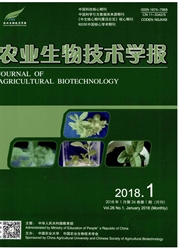

 中文摘要:
中文摘要:
不均一核糖核蛋白K(heterogeneous nuclear ribonucleoprotein K,hnRNP K)属于hnRNP蛋白家族,可以与核酸和蛋白质互作.hnRNPK在结构上主要包括3个可以与DNA或RNA结合的K蛋白同源结构域(K homology domain,KH),1个与蛋白质互作的K蛋白相互作用区(K protein interactive region,KI),以及可介导其由细胞质运输到细胞核的N端核定位信号(nuclear localization signal,NLS)序列和可使其通过核孔复合物在细胞浆与细胞核间穿梭的C端核胞浆穿梭信号(nuclear shuttling domain,KNS)序列.hnRNP K在真核生物的许多细胞和组织中均表达,但表达水平在不同发育阶段存在较大变化,主要表达于细胞核和细胞质,在线粒体及质膜上也有表达.此外,hnRNPK的许多位点上存在磷酸化、甲基化、SUMO化(sumoylation)、泛素化和乙酰化等许多翻译后修饰,从而调节其与靶分子的结合,行使不同的生物学功能.hnRNPK蛋白结构的复杂性以及表达、定位和翻译后修饰的多样性决定了其丰富的生物学功能,可以参与转录调控、翻译调控、RNA的剪切加工、DNA修复、染色质重塑等生物学过程,与精子发生、神经系统和卵巢的发育、多种器官发生以及许多肿瘤的发生发展都密切相关.本文对hnRNPK的结构、表达调控、翻译后修饰、生物学功能以及在精子发生过程中的作用进行了综述,以期为更好地阐明hnRNPK的生物学功能特别是在精子发生中的作用机制提供参考资料.
 英文摘要:
英文摘要:
Heterogeneous nuclear ribonucleoprotein K (hnRNP K), a member of hnRNP complex, can interact with nucleic acids and various proteins. The strucaxre of hnRNP K protein mainly contains three K homology (KH) domains that can combine with DNA or RNA, and one K protein interactive region (KI) domain involved in protein interaction. It also contains a nuclear localization signal (NLS) in the N terminal that mediates its transport from the cytoplasm to the nucleus and a nuclear shuttling domain (KNS) in the C terminal that confers the ability to translocate bi-directionally through the nuclear pore complex. In eukaryotes, hnRNP K expresses in many type of cells and tissues, but the expression levels vary during different developmental phases, and it is located predominantly in the nucleus and cytoplasm, also in mitochondria and plasma membrane. In addition, hnRNP K is subject to several post-translational modifications, such as phosphorylation, methylation, sumoylation, ubiquitylatio, acetylation, and so on, which can regulate its interactions with different molecules and influence its functions. The complexity of structure, expression, location and the diversity of post-translational modifications in hnRNP K decide its abundant biological functions, which can participate in transcription, translation, RNA splicing, DNA repair, chromatin remodeling, and also have important roles in spermatogenesis, nervous system and ovary development, organogenesis and carcinogenesis process. Among them, spermatogenesis is tightly regulated and well-studied process consisting of a series of highly specific cellular processes and multiple genes involved in the final formation of the sperm. Many research have shown that hnRNP K may play a key role in spermatogenesis regulation by its special structure, selective splicing and expression pattern. This review focuses on the structure, expression regulation, post-translational modification and biological functions of hnRNP K, and its roles in spermatogenesis. It provides
 同期刊论文项目
同期刊论文项目
 同项目期刊论文
同项目期刊论文
 Tissue expression, association analysis between three novel SNPs of the RXR alpha gene and growth tr
Tissue expression, association analysis between three novel SNPs of the RXR alpha gene and growth tr 期刊信息
期刊信息
